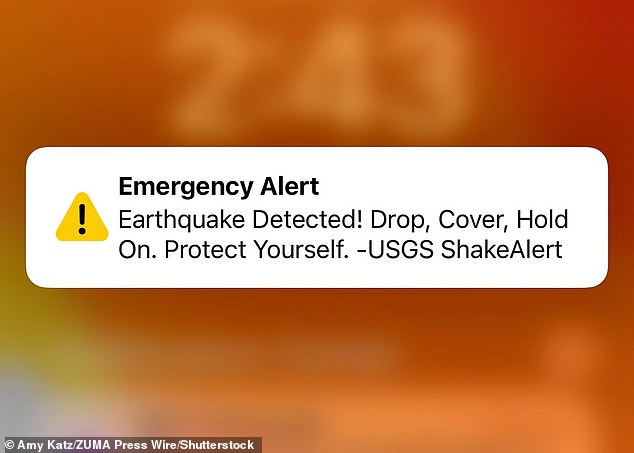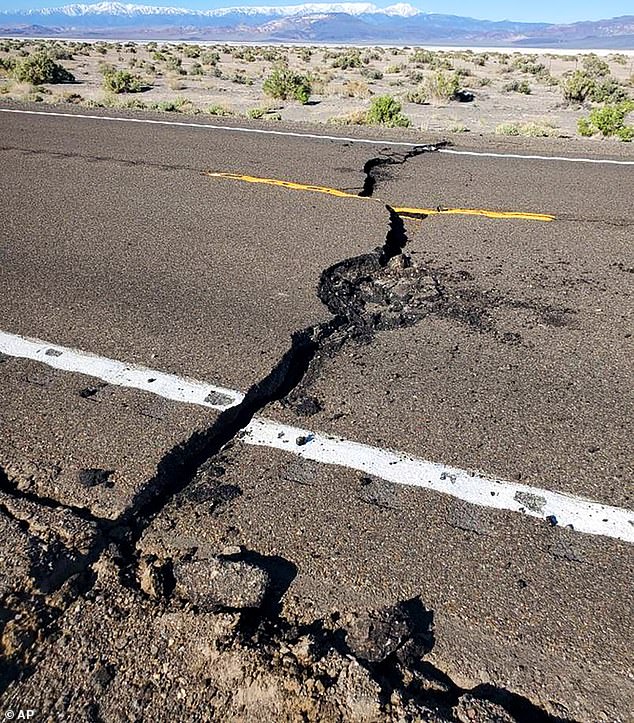California reported its fifth earthquake in just 48 hours, raising concerns about what may have caused the series of quakes.
The 3.3 magnitude earthquake struck 32 miles southeast of Coachella around 1:39 a.m. PST Sunday.
All five quakes originated in Salton City, California, which triggered a swarm of magnitude 3.0 earthquakes that hit El Centro, the largest city in the Imperial Valley, 42 miles away.
The region lies at the southern end of the San Andreas Fault, which represents the state’s greatest seismic risk.
Southern California alone experiences about 10,000 earthquakes each year and the Los Angeles region is expected to experience an earthquake of magnitude 6.7 or greater within the next 30 years, according to a report by the U.S. Geological Survey (USGS).
The U.S. Geological Survey recorded a magnitude 3.3 earthquake in Southern California on Sunday, just days after residents of Salton City experienced four other quakes since Friday.
Californians woke up to a 3.3 magnitude earthquake that struck Salton City and affected people living in Ocotillo Wells, Oasis and Borrego Springs.
A magnitude 2.6 earthquake struck the area just a day earlier, and magnitude 3.4, magnitude 2.6 and magnitude 2.8 earthquakes struck the area on the same day, August 2.
There were no immediate reports of damage or injuries from the earthquakes.
This follows a report of 16 earthquakes with a magnitude of three or greater that hit the region in May.
‘The current earthquakes in the Imperial Valley are being called a swarm,’ says seismologist Lucy Jones wrote in X. ‘These have been common in the Imperial Valley.’
The U.S. Geological Survey (USGS) confirmed that the earthquake began just 2.2 miles below the earth’s surface.
People typically only feel earthquakes of magnitude 3.0 or higher, but it also depends on the depth and location of the earthquakes.
At their deepest points, earthquakes can begin up to 400 miles underground.
Earthquakes reaching 43 miles or less are considered shallow and will only cause minor to moderate damage.
Scientists previously believed the quakes were triggered by water filling the Salton Sea basin, which in turn filled Lake Cahuilla, both located in the Imperial Valley.
Researchers at San Diego State University said in a 2023 report study that when lake water levels rose, it caused more weight to press on the surrounding crust and forced water back underground, causing the fault to rupture and triggering seismic activity.
However, since the early 1900s, the basin and Lake Cahuilla have begun to dry out, but a 2023 study found that while the earthquakes have been at a lower magnitude, the stress on the tectonic plates has continued to grow and could cause another major earthquake in the region.

Earthquakes occur when fault lines beneath the Earth’s crust shift, releasing seismic waves that shake the ground.
‘While factors from the drying of the Salton Sea do contribute to some stabilization of the southern San Andreas fault, tectonic stress driven by plate motion is considerably greater and continues to build stress on the fault,’ said Ryley Hill, a PhD candidate in geophysics who has studied the connection between the basin and the fault line. University of California, San Diego.
The link between the lake and the earthquake arises from induced seismicity: when an earthquake is triggered by forces outside the normal stress interactions between tectonic plates.
It typically occurs when large reservoirs fill with water and has also been linked to hydraulic fracturing, also known as fracking, which injects wastewater into the earth to release natural gas for energy.
“Earthquakes are more frequent when water is involved,” said Thomas Rockwell, a geologist at San Diego State University. EOS.org.
This could be why California’s San Andreas Fault is one of the most active faults in the world, causing thousands of earthquakes in the state each year, 500 of which can be felt by residents.


